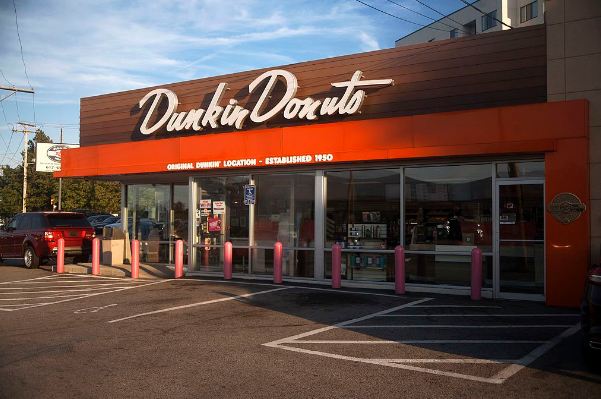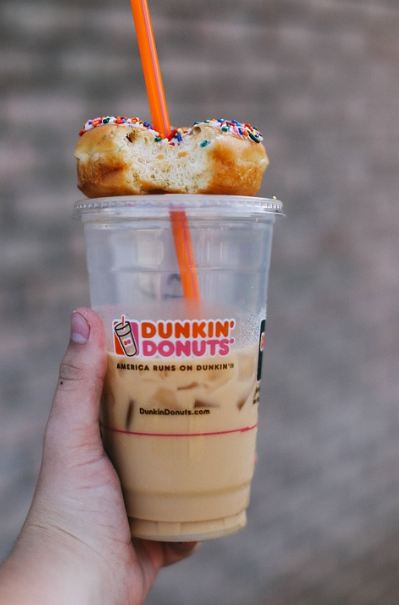Dunkin’, also known as Dunkin’ Donuts, is the biggest doughnut and coffee chain not just in the U.S. but also in the world, with 12,900 locations in 42 countries.
Dunkin’s success story began in Quincy, Massachusetts, in 1948 when entrepreneur William Rosenberg (1916 – 2002) opened a doughnut-and-coffee shop. He named his shop Open Kettle, but in 1950, he changed its name to Dunkin’ Donuts following a meeting with company executives.
Rosenberg conceived the idea from his previous company, which had served sandwiches, donuts, coffee, and snacks from food trucks, which had been fashioned from old telephone company trucks. He soon realized that coffee and doughnuts were his bestsellers.
In 1955, Dunkin Donuts opened its doors to franchising, selling 52 doughnut varieties, enough to have a different special every week of the year.
By 1963, the company had opened its 100th branch, and Rosenberg’s 25-year-old son Robert, a Harvard Business School graduate, had been appointed as the company’s CEO. Eventually, the company became a subsidiary of Universal Food Systems, a conglomerate that owned ten other small food-service businesses. Later on, some Dunkin’ Donuts branches included full breakfast options, while others served only donuts and coffee.
However, Universal’s other businesses were either closed or sold, later renaming itself to Dunkin’ Donuts. In 1990, Dunkin’ Donuts was acquired by Baskin-Robbins’ holding company Allied Domecq. During this decade, Dunkin also bought out rival doughnut chains Mister Donuts and Dawn Donuts.
Robert Rosenberg continued to lead the company until 1999. Under his leadership, the company had streamlined its menu offerings and introduced new items such as Munchkins (donut holes), muffins, croissants, bagels, breakfast sandwiches, Coolattas, and other various beverages. Dunkin’ Donuts also switched from Styrofoam cups to paper cups for their brewed coffee.
The younger Rosenberg also changed the store format by ditching the counters for stools and tables. Dunkin’ Donuts also opened in non-conventional locations. In addition, he launched satellite locations and commissaries, eliminating the need for buildings big enough to house manufacturing and finishing of their products. He also boosted the company’s advertising campaign. His efforts paid off, fueling significant growth.
The evolution didn’t end there. In September 2018, the company made the official announcement that it was planning to change its brand, from “Dunkin’ Donuts” to simply “Dunkin’.”
Similar to Kentucky Fried Chicken‘s re-branding as “KFC,” “Dunkin’” was already a common shorthand name among customers. It had also used “Dunkin’” in its previous ad campaign (“America Runs on Dunkin’”). The rebranding also reflected the chain’s shift towards being a beverage-oriented brand as customers at the time would prefer healthier options and consume fewer doughnuts. It also unveiled its plans to improve its mobile service by adding a special drive-through lane in some branches.
The company introduced the new branding, Dunkin’, in January 2019 and started using “Dunkin’” in all of its U.S. stores. The doughnut chain’s new identity also began to appear on the packaging, advertising, and online and social media channels. Soon, the new rebranding will be rolled out to all of its international branches.
Dunkin’ may have changed its name, but it still embraces its heritage by retaining the iconic logo in familiar orange and pink, which the company first adopted in 1973. Dunkin’ still pays homage to William Rosenberg’s tradition in serving good-ol’ doughnuts, while keeping their brand relevant for future generations.
Dunkin’ is still the number one doughnut and coffee chain in the U.S. and several countries worldwide, with annual sales of $2.9 billion.



